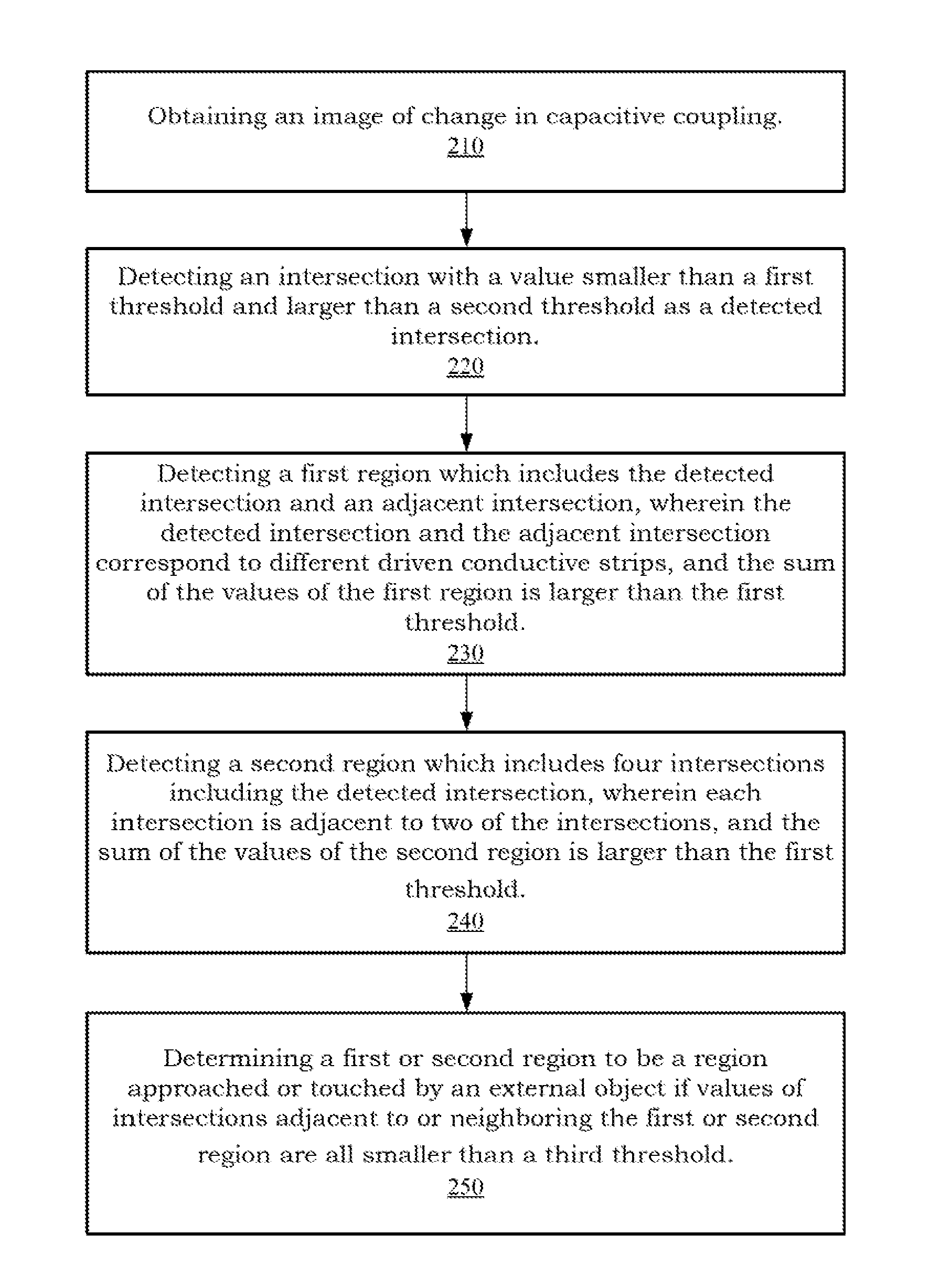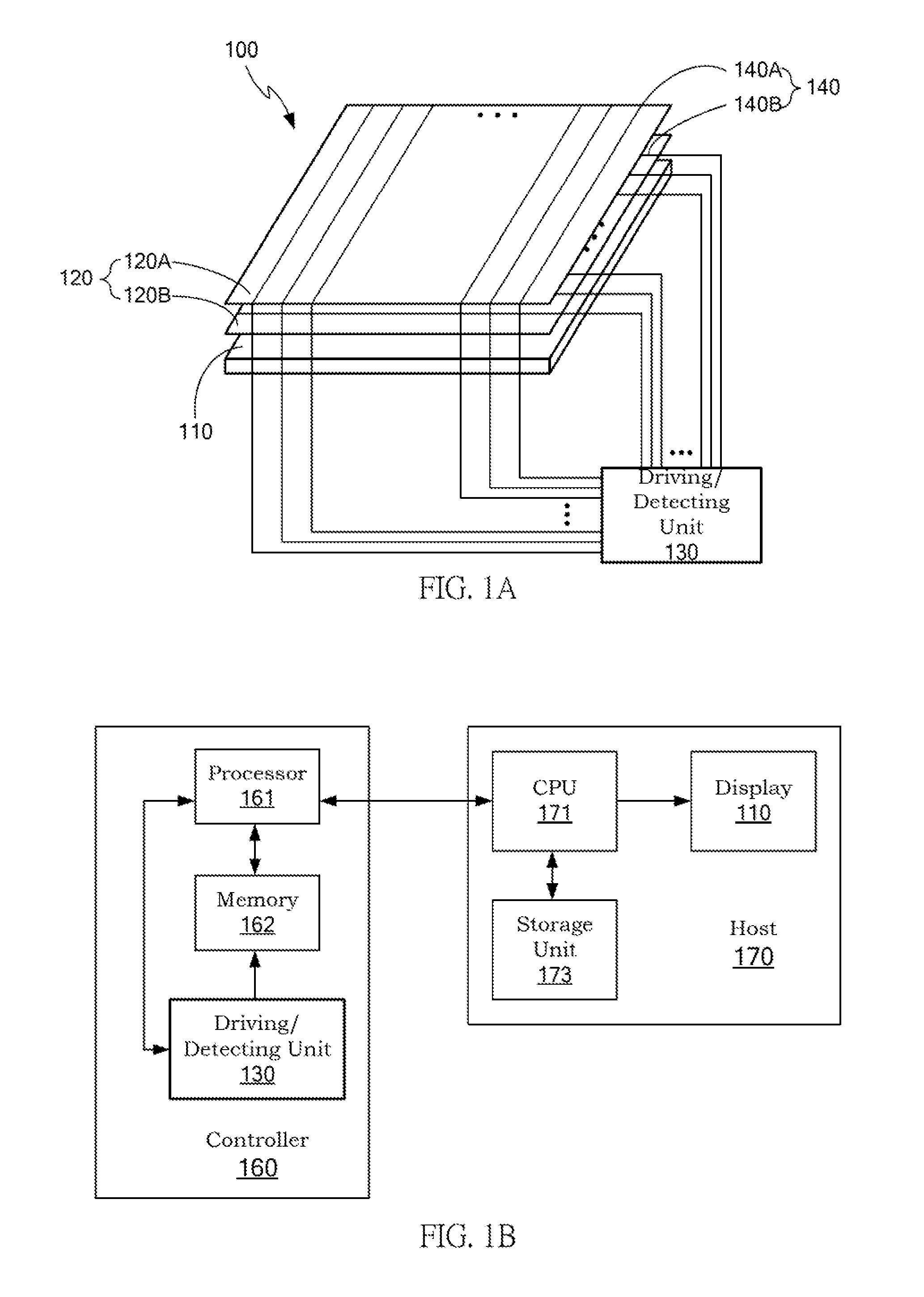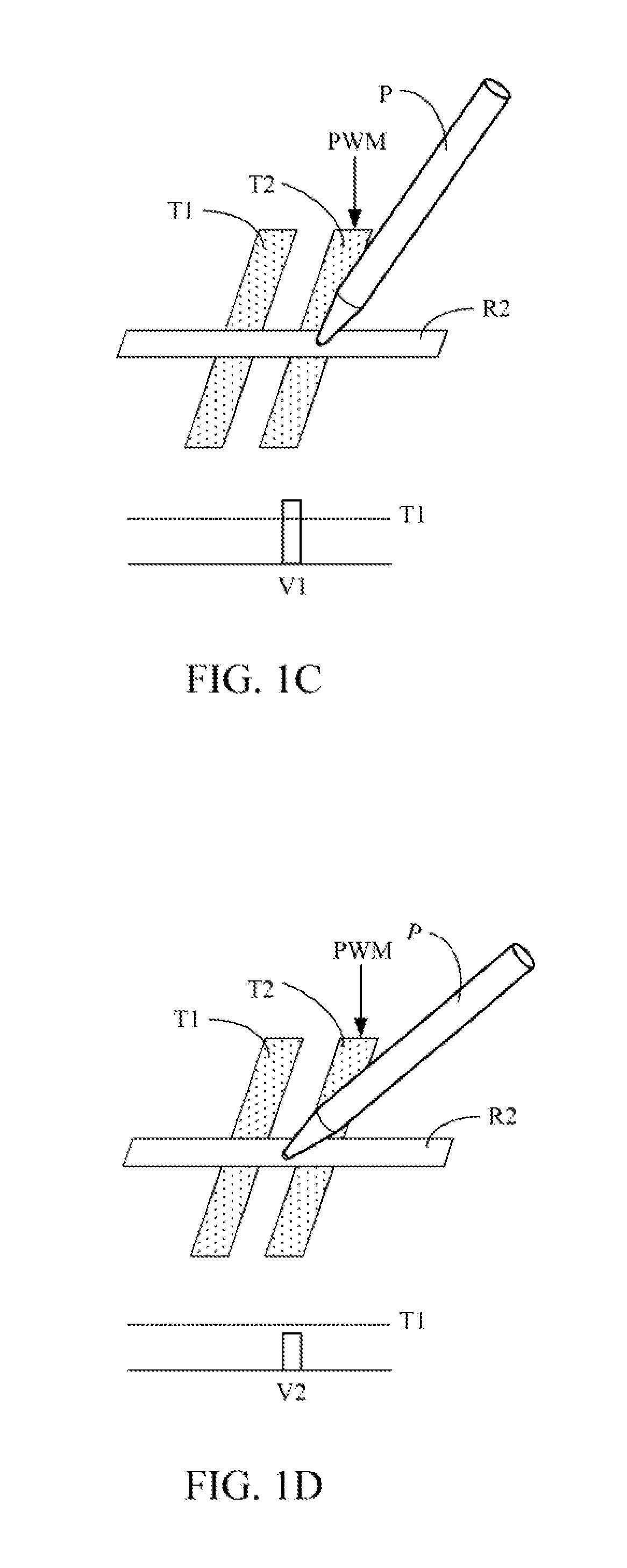Method and device for detecting touch screen
- Summary
- Abstract
- Description
- Claims
- Application Information
AI Technical Summary
Benefits of technology
Problems solved by technology
Method used
Image
Examples
first embodiment
[0054]Referring to FIGS. 1C to 1E, a capacitive pen with a small pen head is shown. The pen head and the pen body of the capacitive pen P are in contact with each other, such that a hand holding the pen body can be capacitive coupled to a touch screen via the pen head. In addition, the diameter of the contact area of the pen head of the capacitive pen P with the touch screen is less than about 3 mm. In a preferred example of the present invention, the diameter of the contact area of the pen head of the capacitive pen P with the touch screen is about 2.2 mm. During mutual capacitive detection, when a driving signal (e.g. a pulse-width modulation (PWM) signal) is provided to a first conductive strip (e.g. a first conductive strip T2), changes in capacitive coupling at each intersection on the first conductive strip is detected through each second conductive strip (e.g. a second conductive strip R2) intersecting the first conductive strip. When the capacitive pen P approaches or touch...
second embodiment
[0078]Referring to FIGS. 3A and 3B, a capacitive pen 30 proposed by the present invention is shown. The capacitive pen 30 includes a conductive pen body 31 and a conductive pen head 32. The conductive pen head is in physical contact with the conductive pen body, such that when the conductive pen body is in contact with the hand or person holding the pen, the conductive pen head is coupled to the hand or human body via the conductive pen body, and is further coupled to ground through the human body. In an example of the present invention, the conductive pen head 32 is made by curing conductive fibers, for example, by optical or thermal curing after being bonded together. In addition, the conductive pen head 32 further includes a contact portion 33, wherein the degree of curing of the contact portion 33 is different from that of other non-contact portion of the conductive pen head 32. More specifically, the contact portion 33 is softer than the non-contact portion of the conductive pe...
third embodiment
[0087]Referring to FIGS. 4A and 4B, a capacitive pen proposed by the present invention is shown. The capacitive pen includes a conductive pen body 40 and a conductive pen head 41. Referring to FIG. 4A, when the pen head 41 is close to or in contact with a touch sensor, the conductive pen head 41 will be capacitively coupled to a driven conductive strip being provided with a driving signal (e.g. PWM), and then based on the capacitively coupled driving signal, the capacitive pen provides an output signal to the touch sensor via capacitive coupling during a period in which the driving signal is no longer provided to any driven conductive strip, as shown in FIG. 4B. The output signal will be capacitively coupled with the conductive strips of the touch sensor to provide detected signals. For example, the output signal is capacitively coupled with at least one first conductive strip Tx to provide a signal St, and with at least one second conductive strip Rx to provide a signal Sr. By scan...
PUM
 Login to View More
Login to View More Abstract
Description
Claims
Application Information
 Login to View More
Login to View More - R&D
- Intellectual Property
- Life Sciences
- Materials
- Tech Scout
- Unparalleled Data Quality
- Higher Quality Content
- 60% Fewer Hallucinations
Browse by: Latest US Patents, China's latest patents, Technical Efficacy Thesaurus, Application Domain, Technology Topic, Popular Technical Reports.
© 2025 PatSnap. All rights reserved.Legal|Privacy policy|Modern Slavery Act Transparency Statement|Sitemap|About US| Contact US: help@patsnap.com



